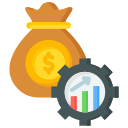Scenario Planning and Sensitivity Analysis
Construct scenarios around demand swings, supply constraints, and policy changes. Tie each to explicit assumptions so teams can track triggers and pivot when early indicators confirm a scenario is unfolding.
Scenario Planning and Sensitivity Analysis
Push models beyond comfort zones using shocks to prices, lead times, and conversion rates. Sensitivity analysis reveals where a one percent move becomes mission critical, guiding hedges and contingency plans.





